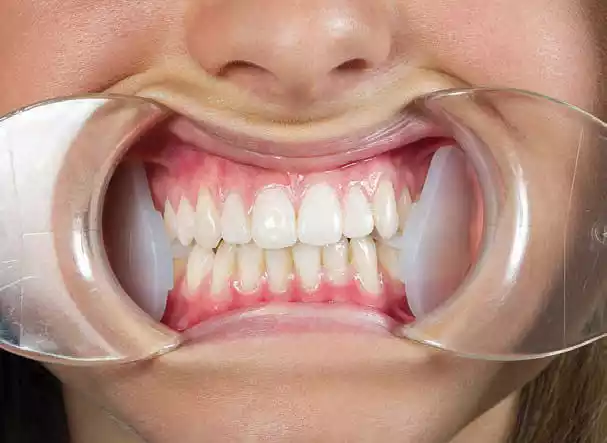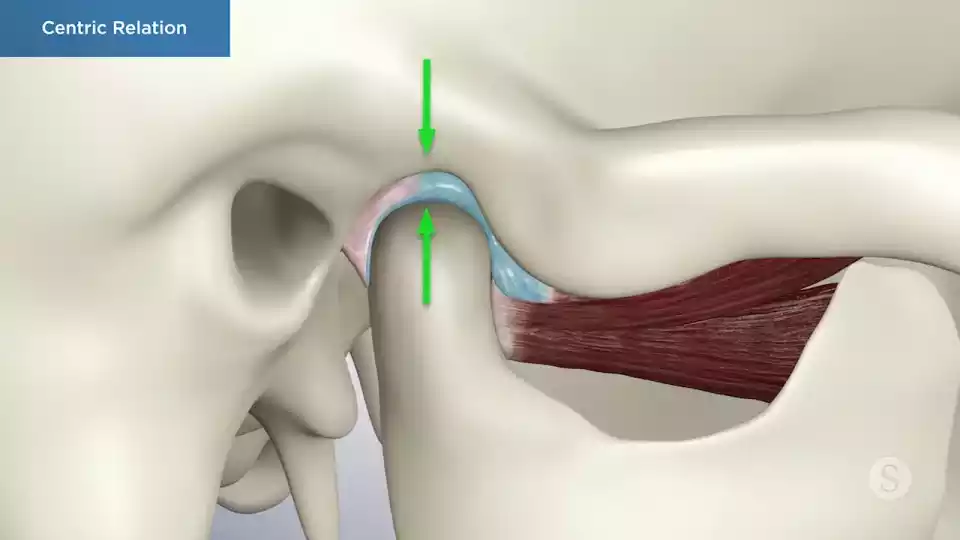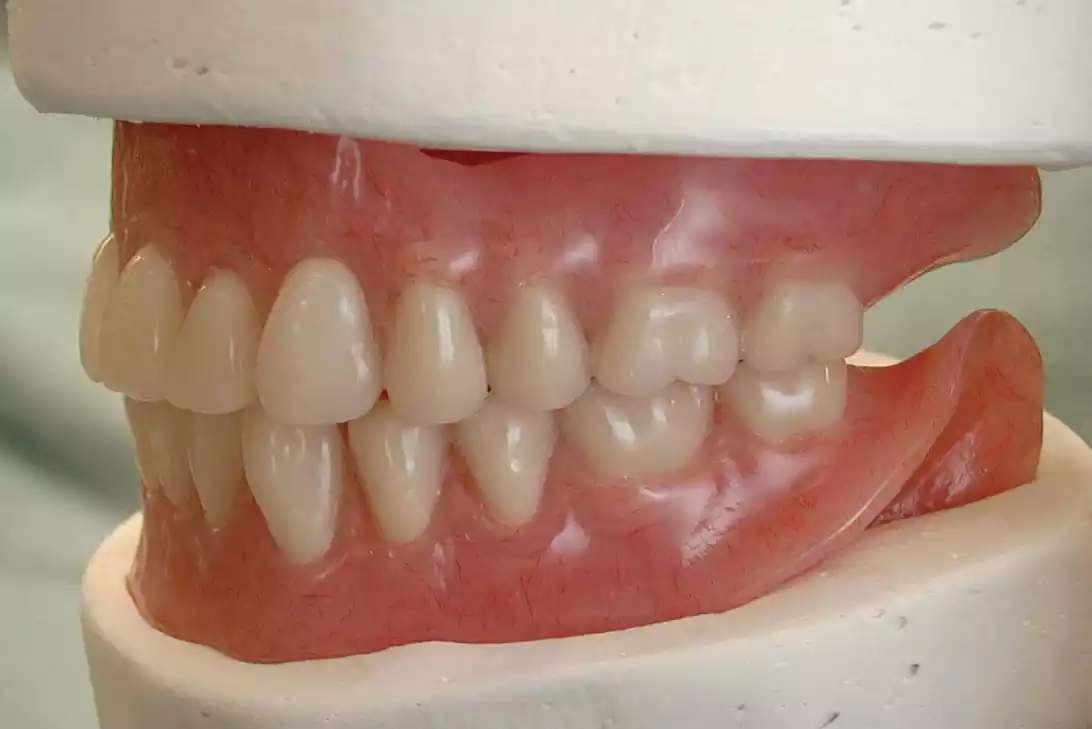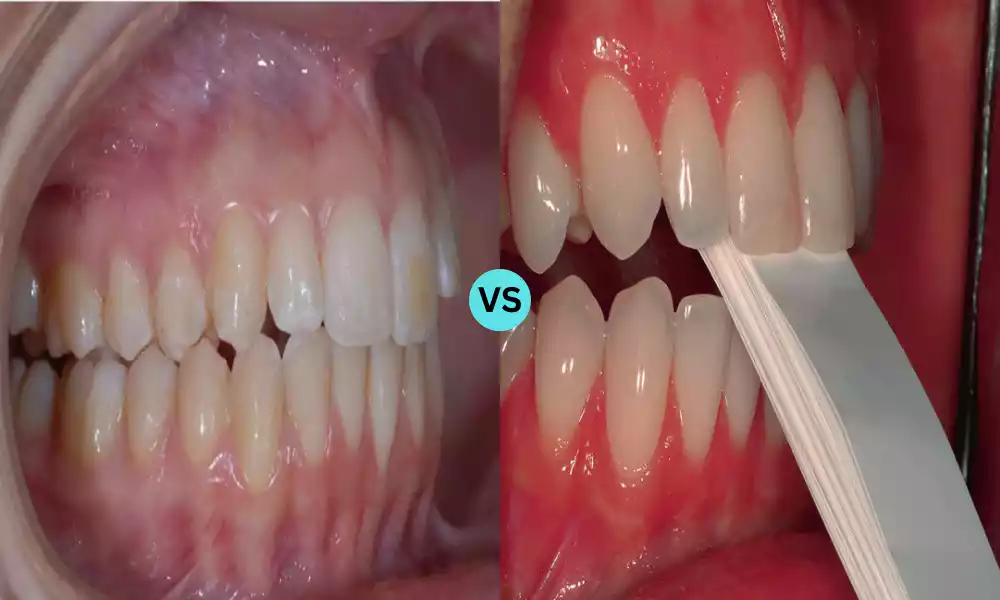Centric Occlusion and Centric Relation are pivotal concepts in dentistry. CO refers to how our upper and lower teeth come together during biting, while CR is the ideal position of the lower jaw to the upper jaw when the head is in a relaxed and upright posture. These terms may sound technical, but understanding them is essential for maintaining proper dental health and ensuring a comfortable bite. We will explore these concepts in detail and their significance in dental care.
What is Centric Occlusion?
Centric Occlusion (CO) is a term used in dentistry to describe the habitual or natural biting position of the upper and lower teeth when the jaws are brought together in maximum intercuspation. In other words, it’s the way your teeth come together when you bite down or close your mouth during everyday activities like chewing, speaking, or swallowing.

Key features of Centric Occlusion include:
- Habitual Position: CO represents the usual or habitual relationship of the teeth during functional activities. It’s the position where the teeth naturally come together.
- Muscular Control: CO is influenced by the contraction of the muscles of mastication (chewing muscles) and other facial muscles, which guide the teeth into their position during biting and chewing.
- Tooth Contact: In CO, there is typically full and even contact between the upper and lower teeth, ensuring that the occlusal surfaces of the teeth fit together in a stable manner.
- Variable Among Individuals: CO can vary among individuals based on factors such as tooth anatomy, occlusal habits, and the stability of the temporomandibular joint (TMJ).
- Clinical Significance: CO is important in various dental procedures, including restorations, occlusal adjustments, and prosthodontics (e.g., crowns, bridges), as it serves as a reference point for establishing a functional and comfortable bite.
Understanding Centric Occlusion is crucial in dentistry, as it helps dental professionals diagnose occlusal problems, plan treatments effectively, and ensure that dental restorations and prosthetics are aligned with the patient’s natural bite for optimal comfort and function.
What is Centric Relation?
Centric Relation (CR) is a critical concept in dentistry that refers to a specific and reproducible relationship between the upper and lower jaws, particularly the position in which the condyles of the temporomandibular joint (TMJ) are in their most superior and posterior position within the glenoid fossa. This position represents the optimal relationship between the upper and lower jaws, independent of tooth contact.

Key features and characteristics of Centric Relation include:
- Reproducible and Stable: CR is a consistent and stable jaw position that can be reliably reproduced. It is not influenced by tooth contact and remains relatively constant.
- Independent of Tooth Contact: Unlike Centric Occlusion (CO), CR is not dependent on the position of the teeth coming into contact. It can be established with the teeth apart, allowing for an accurate assessment of the jaw joint’s true position.
- Muscle and Ligament Influence: CR is primarily determined by the interaction of the ligaments and muscles surrounding the TMJ. It represents the most harmonious relationship between these structures.
- Diagnostic Tool: Dentists use various techniques and instruments to determine CR accurately, such as bimanual manipulation, Gothic Arch Tracing, or leaf gauges. This allows for precise diagnosis and treatment planning.
- Treatment Planning: CR serves as a reference point for various dental procedures, particularly in cases involving prosthodontics, occlusal rehabilitation, and complex restorative work. It ensures that dental treatments are designed to accommodate a stable and comfortable jaw position.
- TMJ Disorder Management: CR is crucial in diagnosing and managing temporomandibular joint (TMJ) disorders. It provides a stable reference point for assessing and treating issues related to the TMJ, such as pain, dysfunction, and clicking or popping sounds.
- Patient Comfort: Establishing a stable CR position is vital for patient comfort, as it helps prevent issues like TMJ pain, muscle fatigue, and discomfort during dental procedures.
- Occlusal Stability: Achieving harmony between CR and CO (the habitual bite position) is essential for establishing occlusal stability. Dentists aim to align these two positions to minimize occlusal problems and discomfort for the patient.
Centric Relation is a crucial reference point in dentistry that provides stability and precision in diagnosis and treatment planning, particularly in cases involving the temporomandibular joint and complex dental procedures. It plays a vital role in achieving occlusal harmony and patient comfort.
Importance of understanding CO and CR in dentistry
Understanding Centric Occlusion (CO) and Centric Relation (CR) is of paramount importance in dentistry for several critical reasons:

- Precise Diagnosis: Accurate diagnosis of dental and temporomandibular joint (TMJ) issues relies on distinguishing between CO and CR. Misalignment can lead to various dental problems, and understanding these concepts aids in identifying the root causes.
- Effective Treatment Planning: CO and CR serve as essential reference points for treatment planning. Dentists need to establish stable and comfortable occlusions for various procedures, including restorations, prosthodontics, and orthodontics.
- Occlusal Stability: A proper understanding of CO and CR is essential for achieving occlusal stability. This stability is crucial for long-term oral health and preventing issues like bruxism, tooth wear, and TMJ disorders.
- Prosthodontics: In prosthodontics (e.g., dentures, crowns, bridges), achieving the correct relationship between CO and CR is crucial for creating functional and comfortable dental prosthetics that do not cause discomfort or TMJ problems.
- TMJ Disorder Management: CR is directly related to the optimal position of the TMJ. Understanding CR is vital for diagnosing and treating TMJ disorders, which can cause significant pain and dysfunction.
- Patient Comfort: Patients are more likely to experience comfort and reduced risk of complications when their dental work considers both CO and CR. Achieving harmony between these positions is essential for patient satisfaction.
- Preventing Complications: A lack of understanding regarding CO and CR can lead to complications such as occlusal instability, tooth sensitivity, and TMJ problems. Preventing these issues is essential for maintaining the long-term success of dental treatments.
- Effective Communication: Dentists need to communicate effectively with dental laboratory technicians and other specialists involved in dental treatments. CO and CR serve as standardized reference points, ensuring clear communication and predictable results.
- Continuing Education: Dentistry is an evolving field, and ongoing education is essential. Staying updated on the latest research and techniques related to CO and CR ensures that dentists can provide the best care for their patients.
Understanding Centric Occlusion and Centric Relation is fundamental in dentistry because it enables accurate diagnosis, effective treatment planning, occlusal stability, and the prevention of complications. It ultimately contributes to better patient outcomes and long-term oral health.
Comparison Table of Centric Occlusion and Centric Relation
Here is a comparison table highlighting the key differences between Centric Occlusion (CO) and Centric Relation (CR):
| Aspect | Centric Occlusion (CO) | Centric Relation (CR) |
|---|---|---|
| Definition | Habitual tooth position during everyday activities like chewing and speaking | Stable jaw joint position, independent of tooth contact |
| Determinants | Influenced by muscular forces and tooth anatomy | Primarily determined by ligaments, muscles, and jaw joint anatomy |
| Tooth Contact | Teeth are in full contact | Teeth may or may not be in contact |
| Reproducibility | Less stable and reproducible | Highly stable and reproducible |
| Clinical Use | Commonly used for daily dental activities and treatments | Used for diagnostics, treatment planning, and establishing stable occlusion |
| Importance | Important for daily oral functions and basic dental procedures | Crucial for precise diagnosis and complex dental treatments |
| Relationship to TMJ | Limited influence on temporomandibular joint (TMJ) | Directly related to optimal TMJ position |
| Reference Point | Not used as a reference point in treatment planning | Serves as a reference point for dental procedures |
| Dental Procedures | Used in restorations, occlusal adjustments, and general dentistry | Vital in denture construction, occlusal rehabilitation, and TMJ disorder management |
Understanding these distinctions is essential for dental professionals to provide accurate diagnoses and treatment plans, ensuring optimal oral health and function for patients.
What are the similarities between Centric Occlusion and Centric Relation?
Centric Occlusion (CO) and Centric Relation (CR) are both important concepts in the field of dentistry, and while they have significant differences, they also share some similarities:
- Relevance to Occlusion: Both CO and CR are related to the alignment and positioning of the upper and lower teeth in the dental arches. They are crucial in understanding and managing occlusal relationships.
- Influence on Dental Treatments: Both CO and CR play a role in various dental treatments and procedures. While CO is relevant for everyday dental activities and basic treatments like restorations, CR is important for more complex procedures such as denture construction and occlusal rehabilitation.
- Diagnostic Value: Both CO and CR can provide valuable diagnostic information for dental professionals. CO can reveal issues related to tooth contact and occlusal stability, while CR can help in diagnosing temporomandibular joint (TMJ) disorders and planning treatments accordingly.
- Patient Comfort: Achieving a harmonious relationship between CO and CR is essential for patient comfort and optimal function. Dental treatments aim to establish a stable and comfortable occlusion for patients, whether in CO or CR.
- Reference Points: While CO and CR serve different purposes, they both serve as reference points for dental procedures. CO guides treatments related to tooth alignment and bite, while CR is a reference for procedures involving the TMJ and complex occlusal adjustments.
- Interconnectedness: Achieving a balance between CO and CR is essential for comprehensive dental care. Ensuring that the jaw functions comfortably in both CO and CR positions is essential for long-term oral health.
While Centric Occlusion and Centric Relation have distinct characteristics and applications in dentistry, they are interrelated and essential aspects of achieving optimal occlusion, patient comfort, and effective dental treatments.
Clinical Applications of Centric Occlusion and Centric Relation
Centric Occlusion (CO) and Centric Relation (CR) have important clinical applications in dentistry, as they serve as reference points and concepts that guide various dental procedures and treatments. Here are some clinical applications of CO and CR:
Centric Occlusion (CO):
- Diagnostic Tool: CO is used as a diagnostic reference point during oral examinations to assess a patient’s natural bite and occlusal stability. Any discrepancies or abnormalities in CO can indicate potential occlusal issues that may require treatment.
- Restorative Dentistry: Dentists use CO as a reference when performing restorative procedures such as fillings, crowns, and bridges. Ensuring that restorations are aligned with CO is crucial for achieving a comfortable and functional bite.
- Occlusal Adjustments: When patients experience occlusal problems like malocclusions or interferences, CO serves as a reference point for making occlusal adjustments to improve bite alignment and comfort.
- Prosthodontics: CO plays a significant role in prosthodontics, where dental prosthetics like dentures, partials, and occlusal splints need to be designed and adjusted to harmonize with a patient’s CO for optimal function and comfort.
Centric Relation (CR):
- Diagnostic and Treatment Planning: CR is essential for diagnosing temporomandibular joint (TMJ) disorders. Dental professionals use CR as a reference point to evaluate the position of the condyles within the glenoid fossa, aiding in the development of treatment plans for TMJ-related issues.
- Occlusal Rehabilitation: In cases of severe occlusal problems or TMJ disorders, CR is used as a reference to establish an ideal occlusal relationship, often involving occlusal splints or orthodontic treatments, to relieve pain and dysfunction.
- Prosthodontics: CR is critical in prosthodontics for the construction of complex dental prosthetics, especially complete dentures. Ensuring that the prosthetics align with CR provides stability and comfort for the patient.
- Orthodontics: Orthodontists use CR as a reference when planning orthodontic treatments to achieve a well-aligned bite and correct malocclusions. This ensures that the final occlusion is both aesthetically pleasing and functional.
- TMJ Disorder Management: CR is central to the management of TMJ disorders. Treatments such as occlusal splints or orthodontics may be used to reposition the jaw in CR to alleviate TMJ-related symptoms.
Centric Occlusion and Centric Relation are vital concepts in dentistry that are used as reference points in various clinical applications. CO is primarily related to tooth contact and occlusal stability, while CR is associated with TMJ function and the diagnosis and management of TMJ disorders. Both concepts play essential roles in ensuring optimal oral health, comfort, and function for dental patients.
Conclusion
Centric Occlusion (CO) and Centric Relation (CR) are essential concepts in dentistry, each serving distinct yet interconnected roles. CO represents the natural biting position of the teeth during daily activities, guiding routine dental functions and procedures. In contrast, CR signifies a reproducible jaw joint position, independent of tooth contact, vital for precise diagnosis, TMJ disorder management, and treatment planning in complex dental cases.
Understanding and aligning these positions are key to achieving occlusal stability, patient comfort, and successful dental outcomes. Balancing CO and CR is at the heart of comprehensive dental care, ensuring both functionality and long-term oral health.



